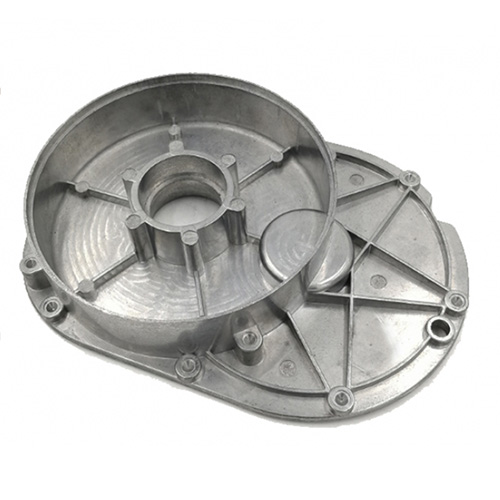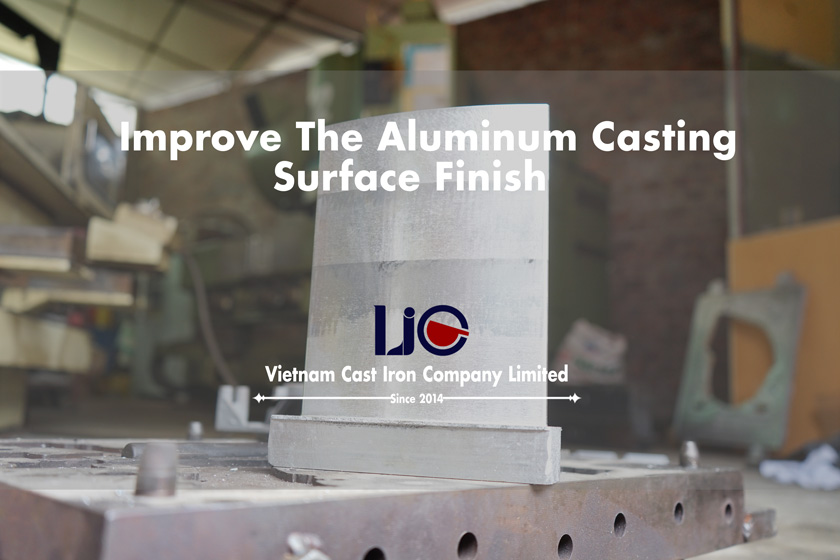The ultimate checklist for Aluminum Casting projects
Understanding the Benefits and Ranges of Aluminum Castings in Market
Aluminum castings have actually become progressively vital across various sectors because of their special homes and producing adaptability. Their light-weight and corrosion-resistant nature makes them appropriate for demanding applications. Different spreading approaches permit specific and elaborate styles. As industries evolve, comprehending the series of light weight aluminum casting alternatives and their benefits is important. This exploration questions about their future duty in production and sustainability. What exists ahead for light weight aluminum in these sectors?
The Essentials of Aluminum Casting Processes
Although aluminum casting procedures differ in technique, they all share a typical objective: to transform molten aluminum into exact forms and elements. The primary techniques of light weight aluminum casting include sand casting, die casting, and financial investment casting. In sand spreading, mold and mildews are created utilizing sand, permitting complex styles but often causing a harsh surface finish. Die casting uses high-pressure shot of molten light weight aluminum right into metal mold and mildews, generating high accuracy and smooth surfaces, suitable for mass production. Financial investment casting, or lost-wax spreading, entails producing a wax pattern coated with a ceramic covering, supplying outstanding information and dimensional accuracy. Each technique has its particular applications and factors to consider, including cost, production quantity, and intricacy of the forms created. Comprehending these basic strategies is essential for industries that rely on aluminum castings to satisfy their layout and functional needs.
Secret Advantages of Making Use Of Aluminum Castings
Aluminum castings use various advantages that make them a preferred choice in numerous markets. One of the essential benefits is their lightweight nature, which enables much easier handling and minimized delivery prices. This particular adds to improved energy effectiveness, especially in vehicle and aerospace applications. Additionally, light weight aluminum displays exceptional rust resistance, prolonging the life expectancy of components and lessening upkeep requirements.
One more benefit is the adaptability of aluminum castings, which can be formed right into complex forms, enabling cutting-edge styles that standard products might not fit. The thermal and electrical conductivity of light weight aluminum also makes it excellent for applications requiring warmth dissipation or efficient electric links. Aluminum castings are recyclable, aligning with sustainability objectives and minimizing environmental influence. Generally, the combination of toughness, toughness, and versatility makes aluminum castings an important element in modern-day production methods throughout numerous markets.
Common Sorts Of Aluminum Castings
Aluminum castings are generated through numerous methods, each matched for various applications and needs. Among the most typical techniques are sand spreading, which supplies adaptability and cost-effectiveness, and pass away spreading, known for its accuracy and efficiency. Understanding these processes is important for picking the suitable spreading technique for certain commercial needs.
Sand Casting Process
A substantial portion of aluminum castings in sector is generated via the sand casting process, which is renowned for its convenience and cost-effectiveness. This method involves developing a mold from a sand mixture, enabling the manufacturing of complicated forms and big parts. Sand spreading is particularly advantageous for tiny to medium-sized production runs, as it requires very little first investment in tooling. The procedure begins with pattern production, followed by mold preparation, putting molten light weight aluminum, and finally, cooling down and completing. The high thermal conductivity of light weight aluminum assurances even cooling down, reducing the threat of issues. Sand spreading remains a preferred choice for producers seeking performance and versatility in their aluminum casting applications.
Die Casting Techniques
Die casting methods represent a very efficient approach for creating light weight aluminum castings, specifically suited for high-volume manufacturing. These strategies primarily consist of 2 usual types: hot chamber and cold chamber die casting. In warm chamber pass away spreading, the molten aluminum is infused right into the mold from a reservoir that is heated up, making it ideal for low-melting-point alloys. Alternatively, cool chamber die casting includes pouring the molten aluminum into a separate chamber prior to injection, which suits greater melting-point materials. Both methods use precision in forming intricate geometries and achieving outstanding surface coatings. Additionally, die casting is understood for its rapid cycle times, decreasing manufacturing expenses while maintaining uniformity in high quality across large quantities of parts.
Applications in the Automotive Sector
Changing car design and performance, light weight aluminum castings play a necessary duty in the vehicle sector. These castings contribute substantially to weight reduction, boosting fuel effectiveness and overall vehicle characteristics. Key applications include engine blocks, transmission real estates, and suspension components, where their lightweight nature and strength are crucial.
Aluminum castings additionally enable complex geometries, enabling suppliers to develop intricate layouts that optimize airflow and minimize drag. This ability is especially valuable in electrical and hybrid lorries, where performance and performance are vital.
Furthermore, the deterioration resistance of light weight aluminum prolongs the life-span of auto parts, decreasing upkeep prices and boosting vehicle integrity. The versatility of aluminum castings sustains both mass production and custom applications, making them a preferred selection amongst vehicle designers and developers. Aluminum Casting. As the sector remains to introduce, light weight aluminum castings will certainly remain an important component in the search of innovative automotive modern technologies
Aerospace Market Application
In the aerospace sector, light weight aluminum castings are important to the design and performance of aircraft components. my explanation These castings are used in various applications, including engine parts, structural elements, and indoor installations. Their light-weight nature adds to improved gas effectiveness and total efficiency, which is necessary in aerospace engineering.
Aluminum castings likewise offer outstanding strength-to-weight proportions, permitting manufacturers to develop elaborate designs without jeopardizing architectural stability. The ability to generate intricate geometries makes aluminum casting a favored selection for components that require accuracy and integrity.
In addition, light weight aluminum's resistance to deterioration boosts the longevity of aerospace parts, reducing maintenance prices and enhancing safety (Aluminum Casting). The casting procedure enables high-volume manufacturing, fulfilling the market's needs for effectiveness. Generally, light weight aluminum castings play a pivotal role in progressing aerospace technology and optimizing aircraft layout, adding to the market's ongoing developments

Advantages Over Other Materials
Aluminum castings offer significant benefits over various other materials, making them a favored option in numerous markets. One of the key advantages is their light-weight nature, which adds to lowered power usage and improved efficiency in applications such as automobile and aerospace. Furthermore, light weight aluminum shows exceptional deterioration resistance, enabling prolonged sturdiness and lowered maintenance prices.
The material's exceptional thermal and electric conductivity additionally boosts its appeal, particularly in applications calling for warmth dissipation or effective power transfer. Aluminum Casting. Aluminum castings also provide excellent dimensional stability, guaranteeing exact resistances and decreasing the likelihood of problems throughout the production procedure
Moreover, the flexibility of light weight aluminum permits for intricate shapes and intricate layouts, which can be accomplished through various casting techniques. This adaptability makes aluminum a beneficial choice for suppliers over here intending to introduce while maintaining cost-effectiveness and top quality. In conclusion, aluminum castings stand out because of their special mix of properties that deal with varied industrial demands.
Future Fads in Aluminum Casting Innovation
Future trends in aluminum spreading modern technology are significantly focused on automation and the development of sophisticated alloys. Automation stands to boost effectiveness and accuracy in casting processes, minimizing labor expenses and boosting product consistency. Simultaneously, improvements in alloy formulations assure to increase the variety of applications for light weight aluminum castings, dealing with certain performance requirements in numerous industries.
Automation in Casting Processes

Advanced Alloys Development
With the recurring development of material science, the advancement of innovative alloys is set to transform light weight aluminum casting technology significantly. These cutting-edge alloys are designed to boost mechanical residential properties, rust resistance, and thermal stability, dealing with diverse commercial applications. Researchers are concentrating on hybrid alloys that integrate aspects such as magnesium, silicon, and zinc to achieve peak performance. In addition, advancements in computational modeling and simulation are making it possible for the forecast of alloy behavior under numerous problems, improving the layout procedure. The assimilation of reusing innovations is likewise coming to be necessary, permitting makers to produce high-performance aluminum castings while minimizing environmental influence. As these fads continue, the light weight aluminum spreading market is likely to witness substantial renovations in performance, sustainability, and item high quality.
Regularly Asked Concerns
Just How Is Aluminum Casting Eco-friendly?
The concern of aluminum casting's environmental friendliness occurs from its recyclability and reduced power intake compared to other steels. In addition, advancements in lasting techniques additionally enhance its environment-friendly reputation within producing processes.
What Is the Normal Life Expectancy of Aluminum Castings?
The common lifespan of light weight aluminum castings varies based on application and setting, usually ranging from a number of directory years to decades. Factors such as direct exposure to corrosive components and mechanical stress can considerably influence their longevity and durability.
Can Aluminum Castings Be Reused?
Aluminum castings can certainly be reused. This process considerably lowers waste and conserves resources, enabling makers to reuse materials successfully. Recycling aluminum castings adds to sustainability and lessens the environmental impact linked with aluminum production.
What Are the Typical Flaws in Aluminum Castings?
Usual defects in aluminum castings include porosity, contraction, misalignment, and surface area blemishes. These problems can occur from insufficient pouring methods, incorrect alloy composition, or not enough air conditioning, inevitably impacting the quality and performance of the end product.
Just how Do I Pick the Right Aluminum Casting Process?
Picking the best aluminum casting procedure requires examining production quantity, component complexity, and desired homes. Variables such as price, lead time, and material qualities additionally affect the choice, making certain optimal results for specific applications.